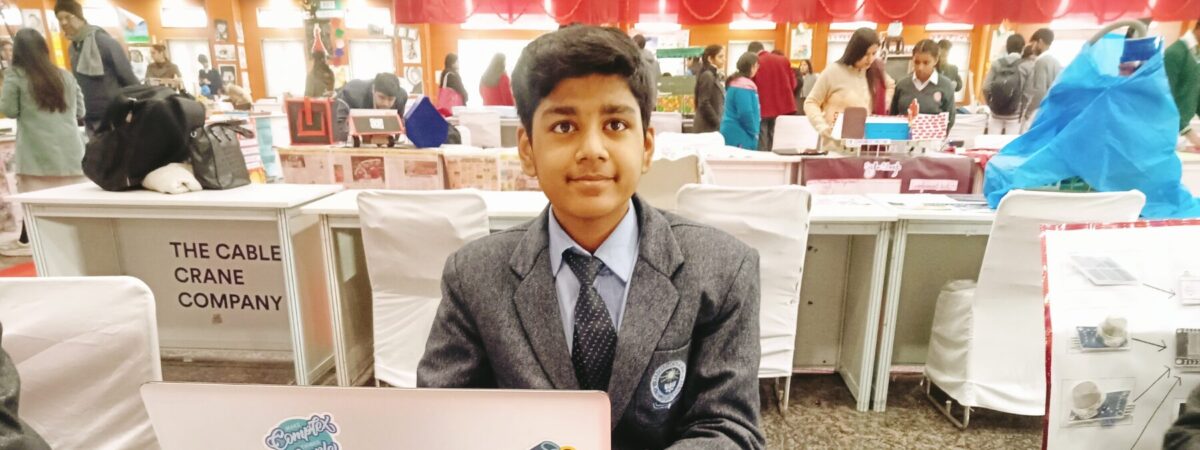
The YouthMADE Festival is a global celebration of youth creativity and innovation that invites students, educators, and advocates to showcase youth-led work. Leading up to the 2025 YouthMADE Festival, we are sharing a series of stories highlighting youth creators and changemakers around the world who are putting their hands, hearts, and minds toward projects and causes they care about.
This story is by Divit, a ninth grade student at Vikas Bharati Public School in Delhi, India. In this story, Divit shares how he developed AudioLink, a product that uses data gloves to translate sign language into spoken languages.
The idea for AudioLink came from my own experiences. As someone who’s hearing impaired, I understand the frustration of communication barriers. There are times when people just don’t know sign language, and it can be isolating. I thought there had to be a better way to bridge the gap, and that’s how AudioLink was born!
My goal is to create a seamless communication tool for the deaf community. With AudioLink, they can interact more effectively with the general public, reducing social isolation and misunderstandings.
This project is incredibly important to me because I understand the challenges of communication firsthand. AudioLink has the potential to empower deaf and mute individuals and improve their quality of life. AudioLink can break down communication barriers and allow people to interact more confidently in everyday situations.

Divit with his data gloves at an exhibition.
One big milestone was getting the data gloves to work properly. It took a lot of trial and error to figure out how to map the hand movements to specific signs. We tackled this challenge by working with experts to refine the sensor technology and improve the mapping between hand movements and specific signs. Seeing the accuracy improve has been very rewarding.
Another milestone was developing the initial translation software. It’s still under refinement, but being able to see signs turn into words on screen was a huge moment!
Right now, I’m figuring out the intricacies of programming the translation software. It’s a complex process, but I’m constantly picking up new things. Additionally, I’m working closely with the deaf community to understand their specific needs and preferences when it comes to sign language translation. This user-centered design approach is crucial to ensure AudioLink is not just functional, but truly solves a problem for the people who will be using it.

Divit demonstrates AudioLink at an exhibition
One thing that surprised me was the vast number of local sign language variations. It really emphasized the importance of making AudioLink inclusive of diverse signing styles.
Collaborating with teachers, mentors, and the deaf community has also sharpened my communication skills. I’ve learned to explain complex technical concepts in an understandable way and actively listen to feedback to make sure everyone’s on the same page.
On the technical side, I’ve delved into the world of data gloves and gesture recognition software. It’s been amazing to see how hand movements can be translated into digital signals. This project has also been a masterclass in project management. I’ve learned to break down big goals into smaller steps and juggle my time and resources effectively to keep things moving.
This project has also made me more patient and persistent. There have been setbacks, but I’ve learned to keep pushing forward and find solutions. It’s also boosted my confidence—seeing AudioLink come to life has shown me what I’m capable of achieving.
I also hope to see AudioLink incorporate more local languages, making it even more inclusive. It’s an ambitious goal, but with continued development and support, I believe we can make it happen.
I’m so grateful for the support I’ve received from my school, family, and the deaf community, and I can’t wait to see what we can achieve together.